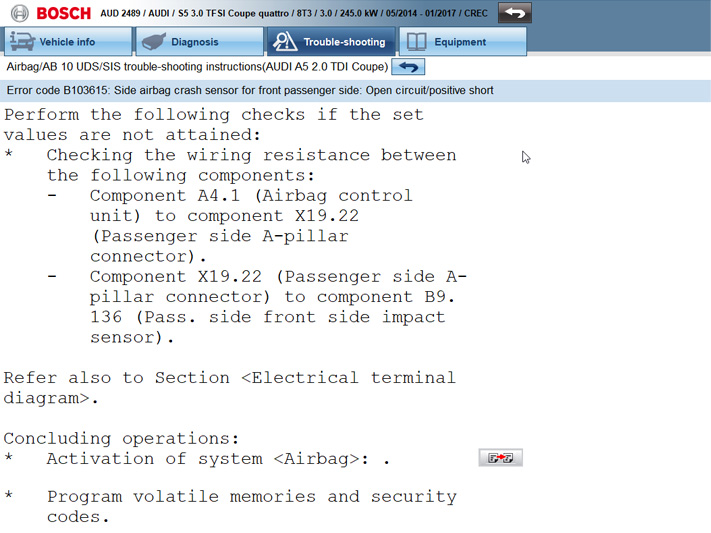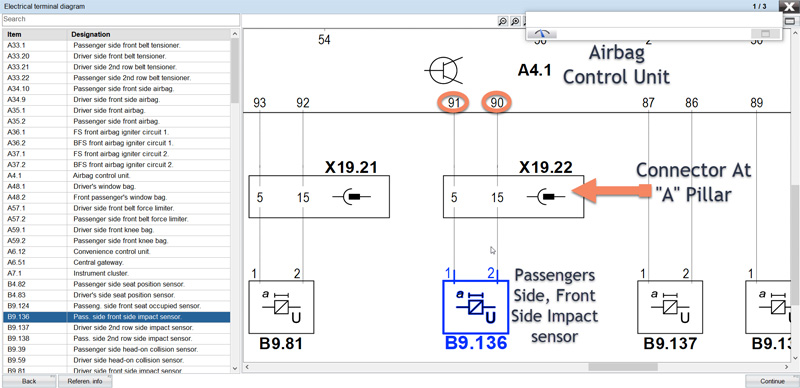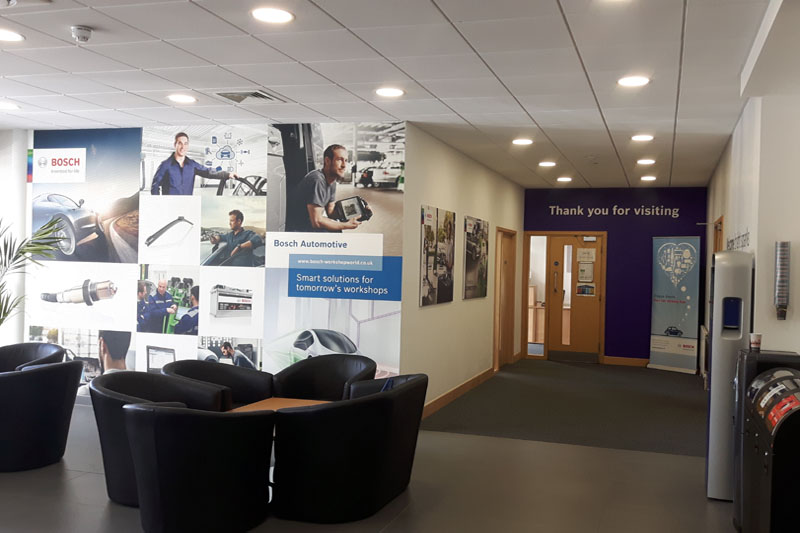PMM has enlisted Darren Cotton, of AVC UK, to attend the full range of course modules on the Bosch Diagnostic Technician Programme over the coming months. On his latest visit to Bosch, Darren took part in VSB 8: Airbag and Supplementary Safety Systems. Here’s how he got on.
This module covers a complete history of the evolution of vehicle airbag systems. Delegates gain a comprehensive understanding of vehicle airbag safety systems, covering subjects such as combined active and passive safety, EURO-NCAP, collision detection, pedestrian protection, side and head airbags, pressure sensors, control units, active head rests, I-bolts and other related components. This is a two-day module with a variety of theory and practical tasks involved.
We started by introducing combined active and passive safety (CAPS) with the instructor explaining how they work collaboratively to reduce the risk of an accident. Covering a variety of active safety systems such as blind spot detection and pedestrian obstruction avoidance, we looked at the relatively new systems that are becoming increasingly popular but are not yet seen frequently in independent garages.
Euro-NCAP is something I had heard of, but I was not aware that there are four main occupant areas within the vehicle that are evaluated in a Euro-NCAP test. I was therefore glad this was explained in detail. It was also very interesting to hear that pedestrians’ and cyclists’ safety is incorporated within the Euro-NCAP test, in addition to the vehicle structure.
During the two days, we watched various short videos looking at specific airbag operations. The videos helped to demonstrate the theory we were learning at the time and enhanced our understanding. One example was seeing an airbag deployment in slow motion, as in real time this takes around 150 milliseconds.
The training facilitator discussed dual stage airbags and gas generator systems, explaining the purpose of each internal component, what gases are used and why. We looked at the advantages of having a dual system, and the triggering process in an impact. Learning the minute details of the component gave us a new level of respect for the life-saving function that airbags perform.
The history of airbag control units was covered with a quick look at earlier generations, but the focus was more on current control units used, such as the AB9 and AB10 family. We were able to look at how airbag systems have changed over the years, and how the accident severity and direction of impact can be determined, as well as how other protection functions can be integrated.
The group enjoyed various practical tasks over the two days, and these were undertaken in the workshop using an airbag system set up on a demonstration rig. The rig had components installed, allowing us to use Bosch ESI software to follow the six steps for decommissioning the airbag system, highlighting the importance of performing an electrostatic discharge.
Following the practical tasks that were set out within our course booklets, the group placed the ESI in demo mode. We were then able to demonstrate some fault codes found within the airbag system. We opened the SIS section within ESI so that we could follow the test routine. This allowed the group to be able to carry out some measurements as they would appear in a real-life situation. We also looked at rollover protection using periphery sensors. We discussed how a control unit determines the difference between a large tilt angle and an imminent rollover.
I found VSB 8 to be a very informative course. Not only did it give me a better understanding of airbag systems but it also gave me greater confidence in approaching airbag faults. Understanding the safety aspects and ironing out some myths of airbag systems helped me to understand the correct method to use in diagnosing and testing these circuits.
Back at my own workshop, I had the opportunity to put the training to some use. I was faced with a 2015 Audi S5 with the airbag light on. This had been looked at by another repairer and the fault code cleared on two occasions, but the airbag warning light came back on after a few days each time.
Using the Bosch ESI system, I had one fault code stored: B103615 Side airbag crash sensor for front passenger side open circuit/Positive short.

With the fault code being hyperlinked on the Bosch ESI system, clicking the fault code took me straight to a test plan (see above) and with the option to view wiring schematics (see below).

Armed with this information and the testing method I had learnt in the training, I diagnosed the fault very quickly, and even used the Bosch KTS 590 as a multi-meter when testing the resistance in the wiring (Fig 3). I have had a KTS for about eight years now and have just upgraded to the KTS590. Since doing these courses, I have been using it more and more.











